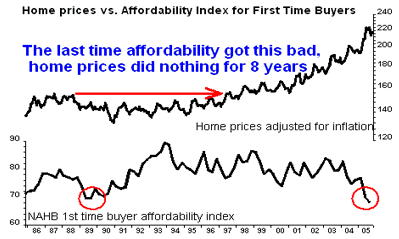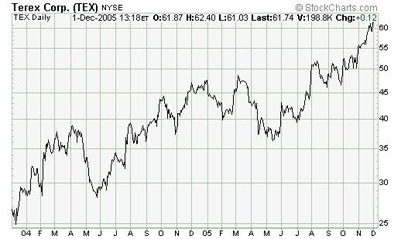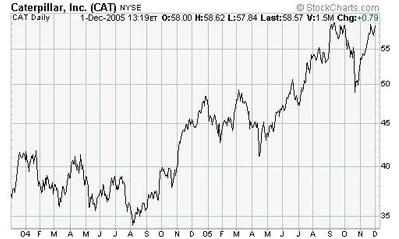| Home | About Us | Resources | Archive | Free Reports | Market Window |
The Golf Course GamblersBy
Friday, December 2, 2005
I usually play golf on my own, but the other day, the course was busier than usual, so the starter asked me to join up with a twosome on the tee. We didn't talk much for the first few holes. The guys gambled with each other, talked about business, and generally kept to themselves.
Then on the fifth tee, as we waited for the fairway to clear, the tall one started a conversation with me. He asked if I lived on the island. I told him I did. That's when the dam burst.
"Whereabouts do you live?" he asked. I told him the address. His eyebrow arched and he glanced at his partner. He was familiar with the subdivision. "Did you buy?" More questions followed:
"Two beds, two baths?"
"How much rent do you pay, if you don't mind me asking?"
"Is the unit in good condition? How old is it?"
"How much is the property worth?"
"Is it owned privately or does an association own it?"
And so the interrogation continued.
Turns out, my golfing buddies were real estate speculators. They had bought two investment properties in the last few months, and by the sixth tee, they were proposing I "take a quick tour" of one of their properties.
"Rent's a little higher than you pay now," he said. "But the place is great."
You might think these guys were local realtors. Or property developers. But you'd be wrong. Like the stock tip shoeshine boy and the daytrader plumber, these guys had no business speculating on property...
I was playing golf with the local high school basketball coaches.
When the shoeshine boy asks you for a stock tip, and your plumber day-trades tech stocks, you know it's time to sell.
The latest research report from Merrill Lynch crossed my desk this morning, with a summary of the current conditions in the housing market:
Here are the most interesting points...
The Supply:
-Housing starts have topped two million units (at an annual rate) for seven months in a row, a string that has happened just three other times in the past fifty years.
-The unsold new housing inventory equals five months' supply - a nine-year high.
-The number of newly built homes that have yet to sell is up 20% year-on-year, the biggest increase in two decades.
The Demand:
-Affordability for the first-time homebuyer sank to a 20-year low last month.
-The University of Michigan's homebuyer intentions survey fell in November to its lowest level since February 1991.
-Mortgage refinancing activity is down 43% in the past four months.
The Result:
November housing starts, new home sales, mortgage applications and building permits are all negative on a year-over-year basis. This last time all this happened in tandem was July 2000.
Merrill Lynch is seeing early signs of some price adjustment already, particularly at the high end of the market.
The financial press also sees trouble ahead for real estate. "The boom is near its end," says The Wall Street Journal. "House of cards," writes theEconomist. Even the high school basketball coaches had jitters.
The obvious conclusion to reach from all this is: We are entering a real estate bear market. The anecdotes predict it. The statistics confirm it.
Problem is, the obvious conclusion is usually the wrong one.
Steve's theory is more unusual. He thinks the froth will get scraped off – the margin buyers, the basketball coaches, the aggressive mortgage lenders – but home prices hold steady. Over time, rents and consumer incomes - pushed by inflation - catch up to prices.
Affordability is a measure of the average homebuyers' ability to meet mortgage payments on the average house. It reflects buyer incomes, mortgage rates and house prices.
As the chart shows, the last time real estate affordability was this low, real estate prices did nothing for 8 years. Prices didn't plunge, they just got whittled away by inflation.
It's not exciting. You won't hear about it at parties. But until we get another update from the basketball coaches, it's the most likely scenario.
Good Investing,
Tom Dyson
Market NotesTHE "PICKS AND SHOVELS" OF THE COMMODITY BOOM As Levi Strauss proved in the mid 1800s, there's an easier way to make a fortune during a gold rush than prospecting for gold. Rather than break rocks all day, Strauss made his millions by selling blue jeans and supplies to the gold miners looking for ore. The same mentality works today. In addition to mining shares, a commodity bull can buy stock in companies that produce the equipment needed to extract the raw materials. Below are two-year charts showing how the commodity boom has boosted two large equipment producers, Terex (TEX) and Caterpillar (CAT).
|
Recent Articles
|




